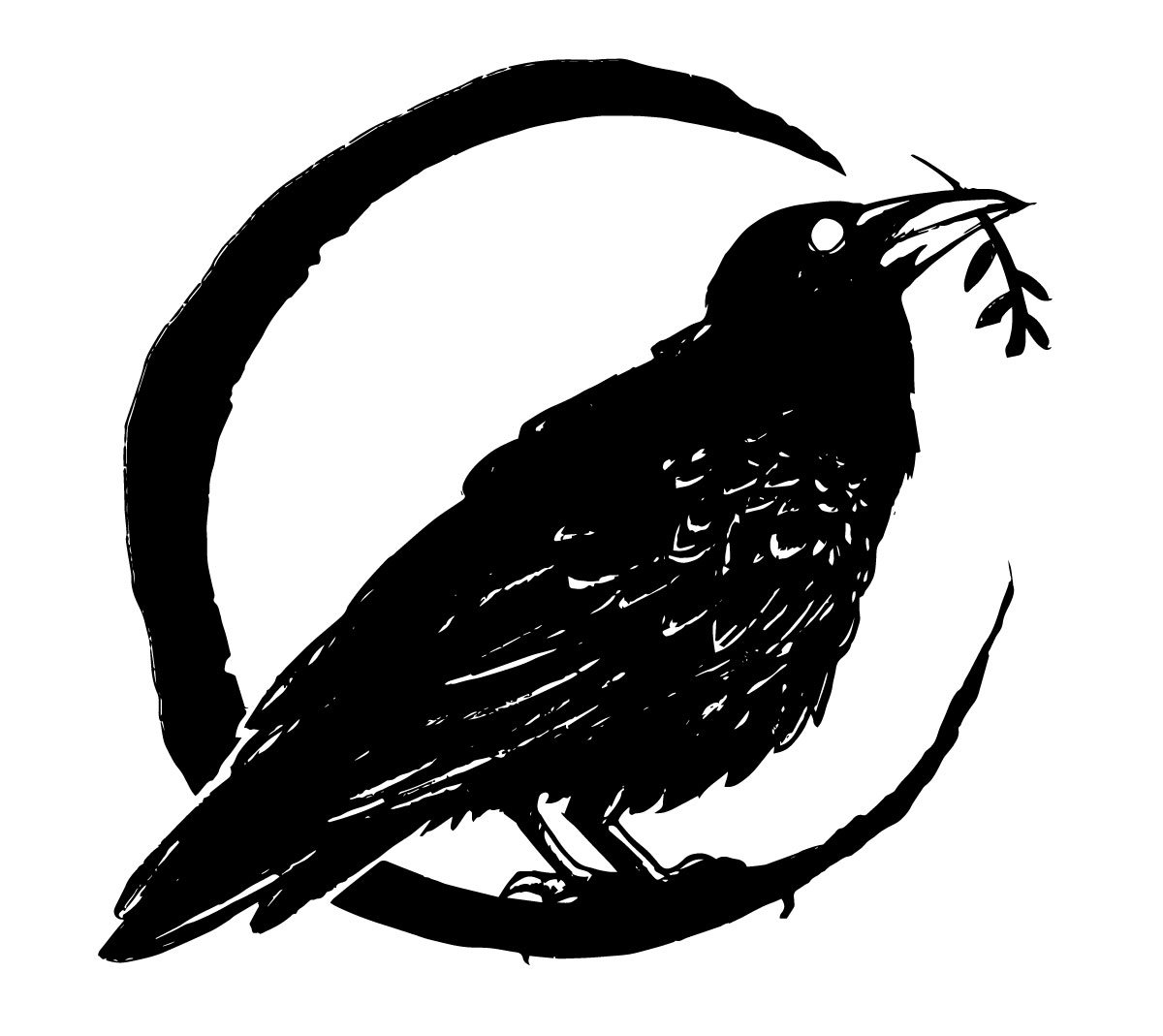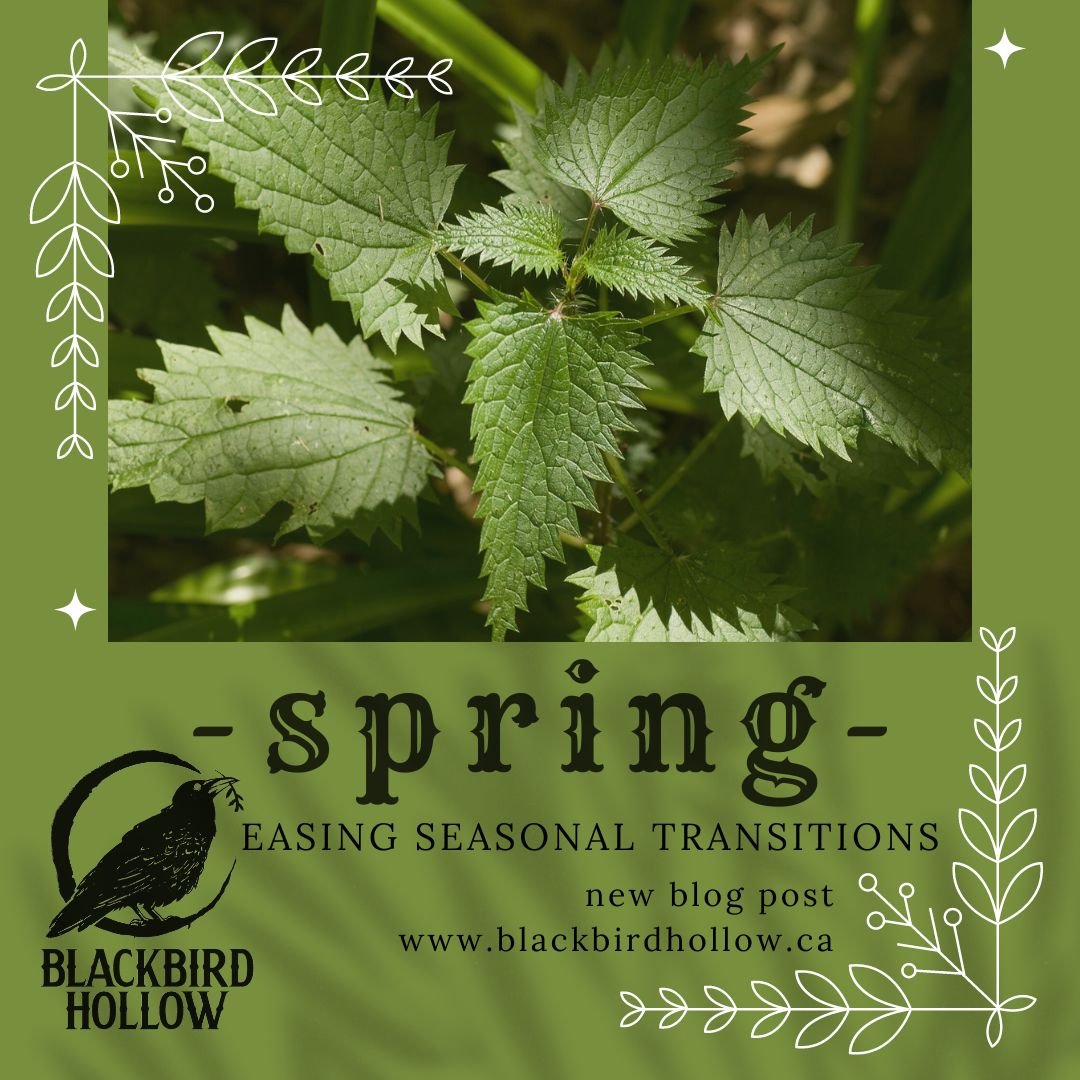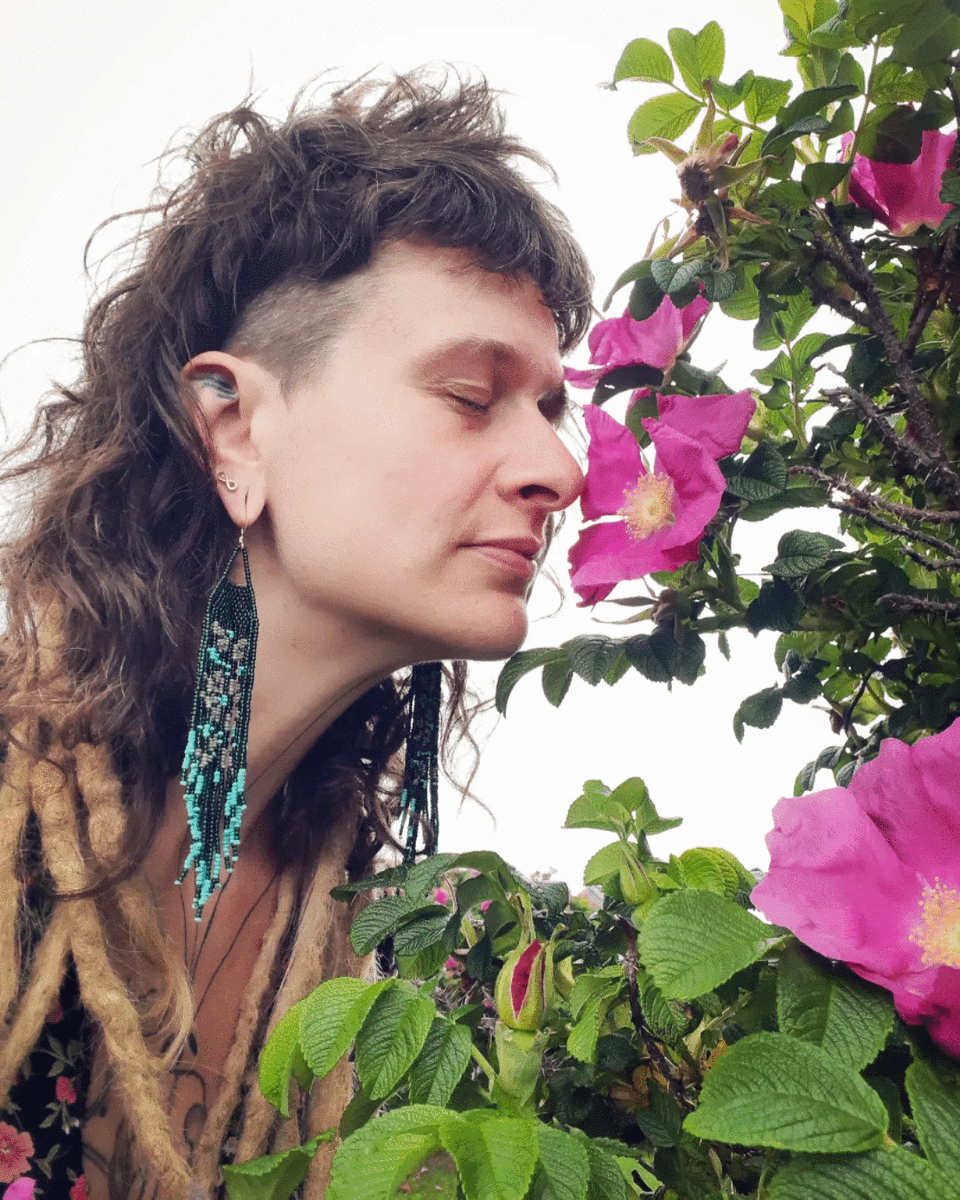

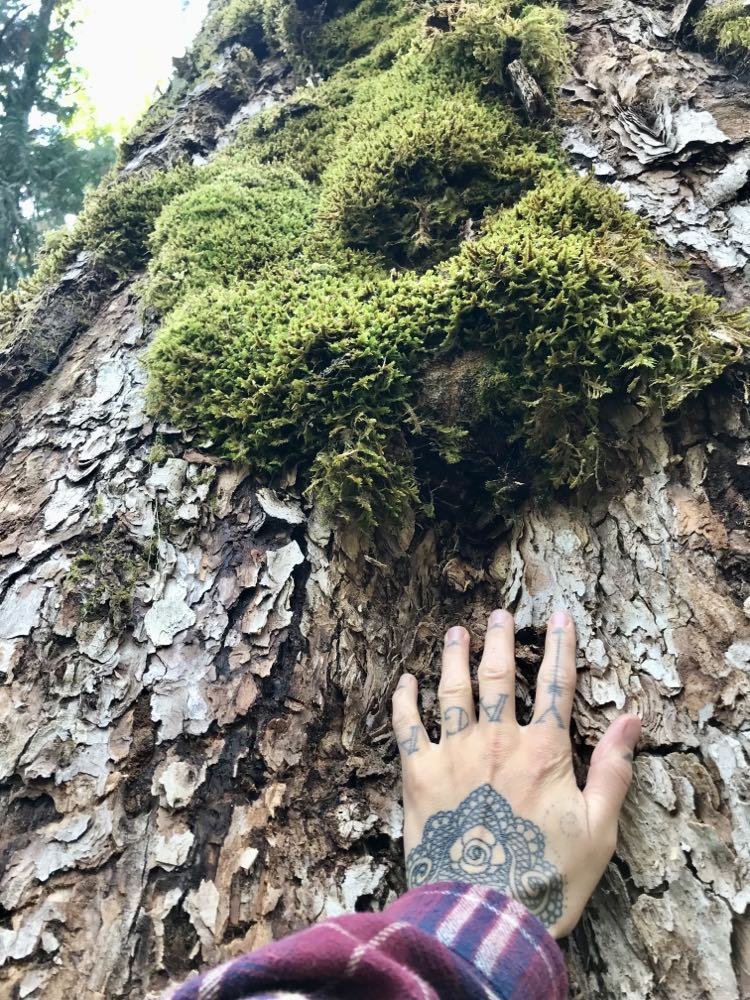
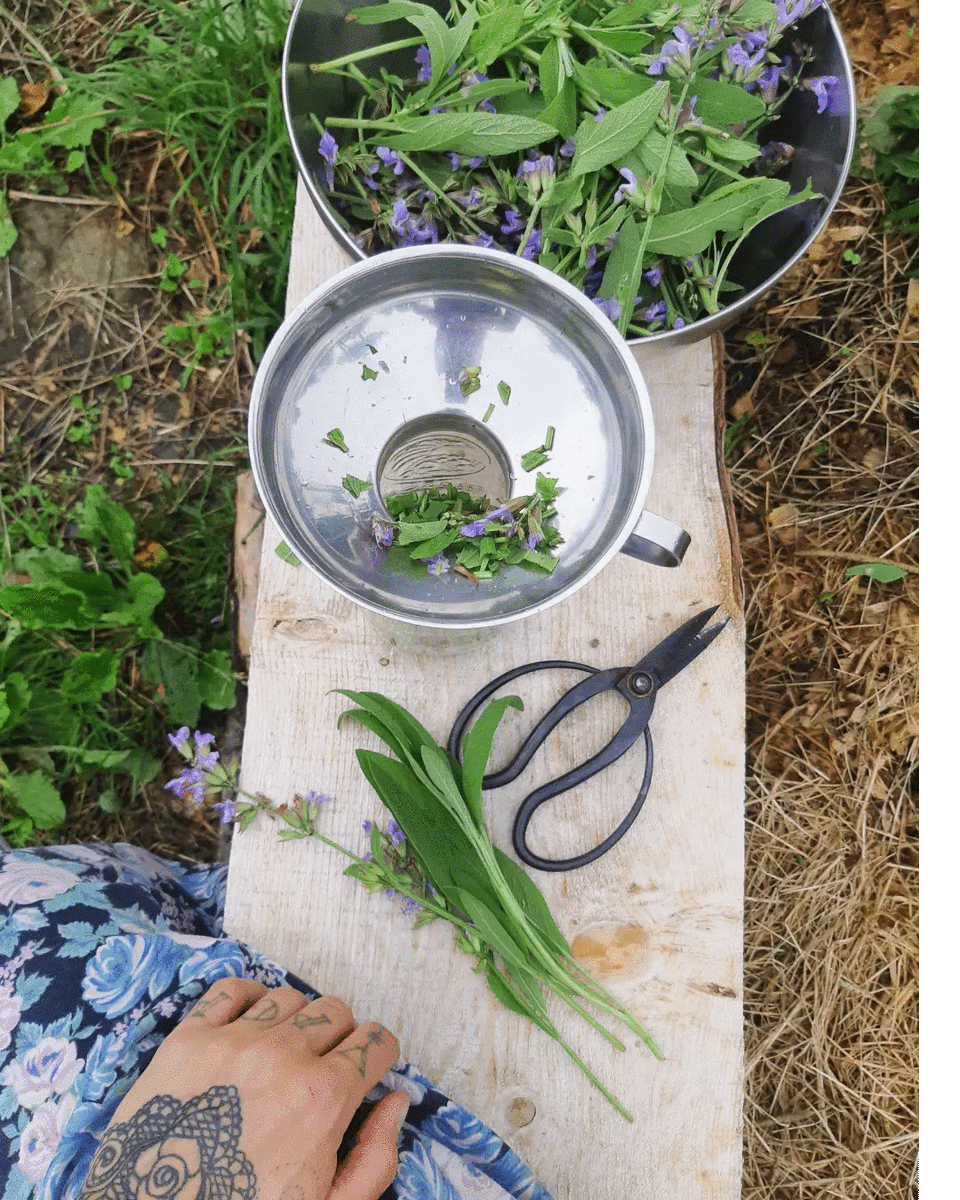

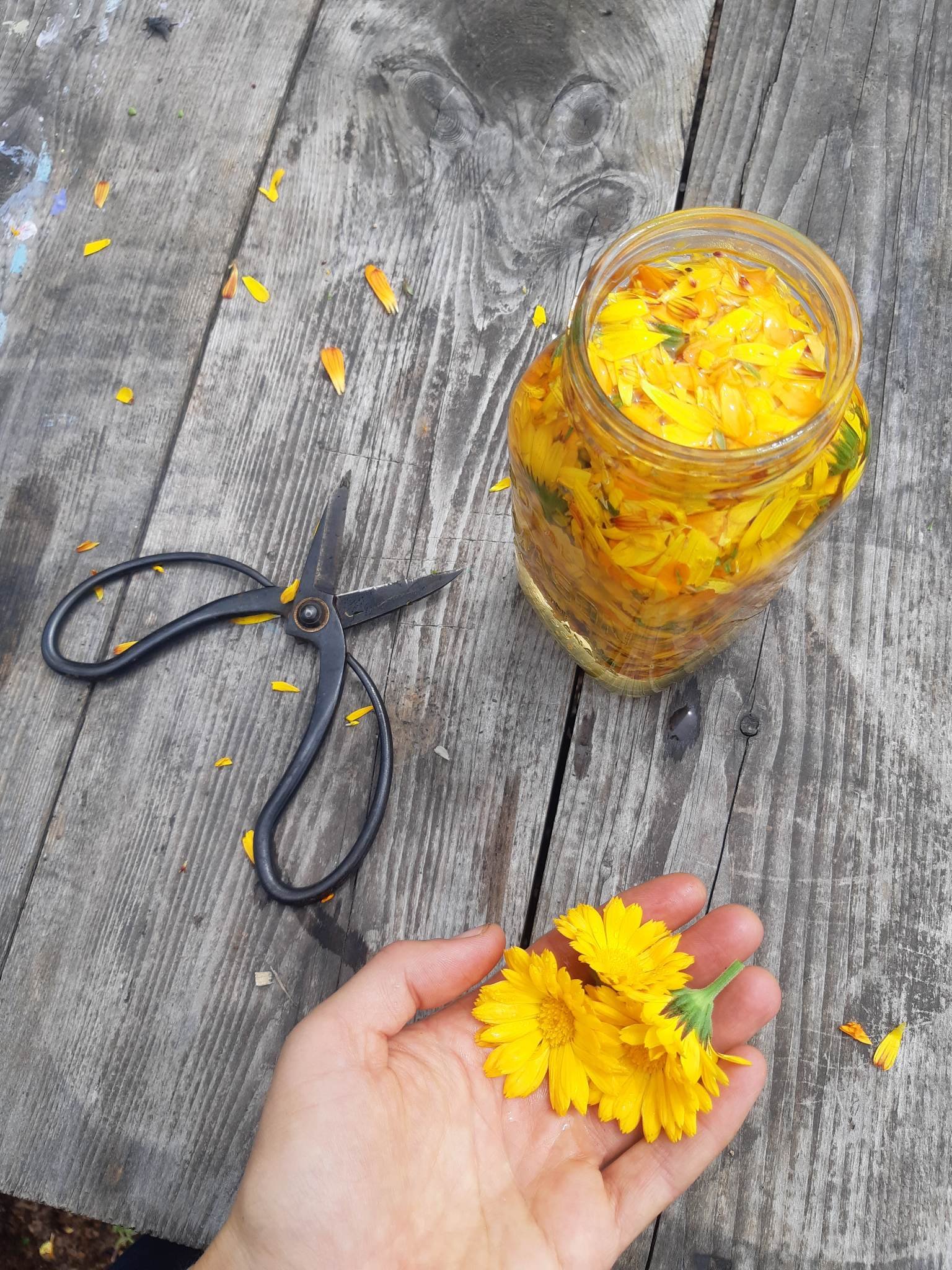
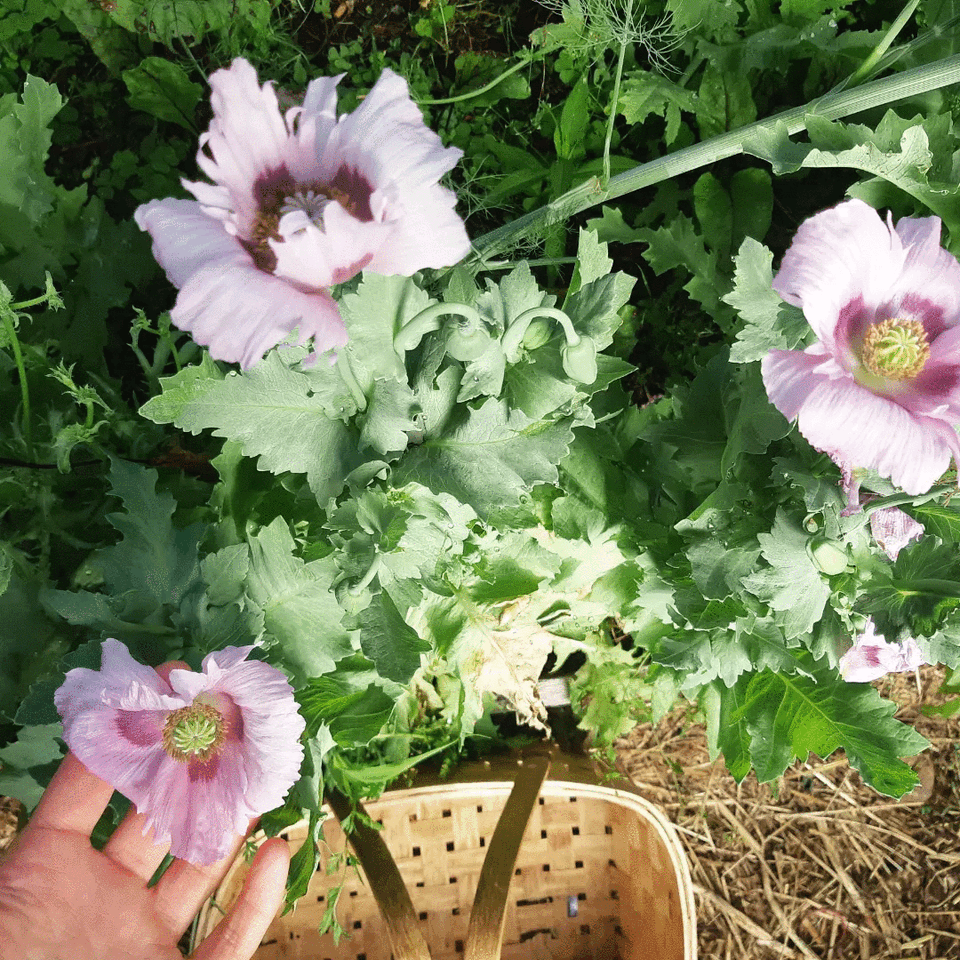
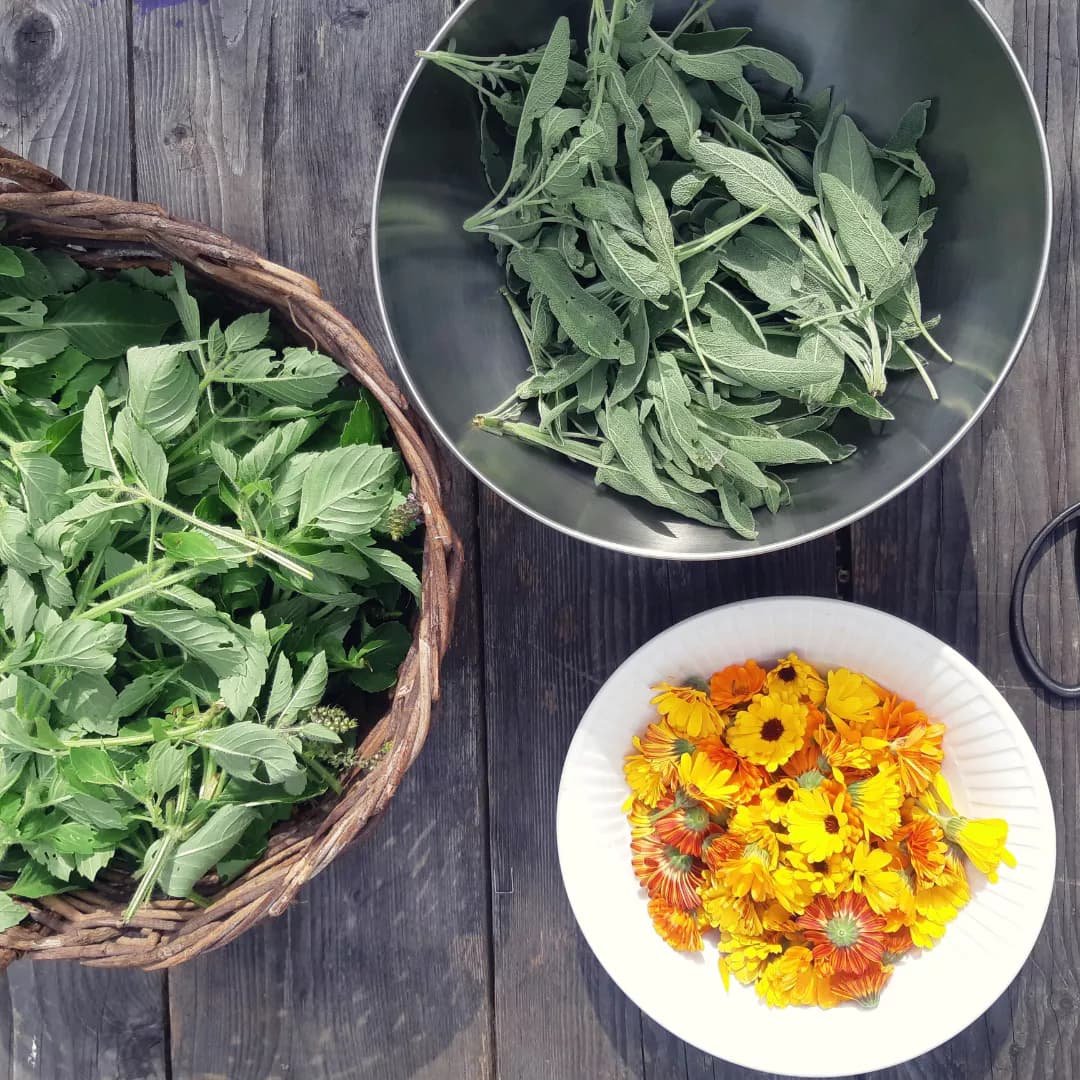


“in some native languages the term for plants translates to “those who take care of us.”
― robin wall kimmerer, braiding sweetgrass
reishi; the mushroom of immortality.
𝚛𝚎𝚒𝚜𝚑𝚒; 𝚝𝚑𝚎 𝚖𝚞𝚜𝚑𝚛𝚘𝚘𝚖 𝚘𝚏 𝚒𝚖𝚖𝚘𝚛𝚝𝚊𝚕𝚒𝚝𝚢.. . said to be ruled by leo (and the sun) and to be used for protection of both our spirit & physical bodies. reishi (ganoderma) is used in traditional herbal medicine wherever it naturally grows, from turtle island to asia. here in mi’kma’ki / nova scotia reishi’s latin name is ganoderma lucidum, and it grows on dead or dying hemlock trees, often along creeks and waterways.
i love the smell of reishi---it is a deep, earthy scent that when i close my eyes brings up dark, mossy forests & the paradox & interconnection of life & death, growth & decay---and how that relationship plays out in the woods & mycelium. mushrooms have definitely grown in popularity in the last decade or so, but their deeply rooted medicine is not a fad. traditional cultures in the east have long worked with the potent medicine of reishi, their knowledge passed down through written & oral history, dating back to the ming dynasty. in china they are referred to as spirit mushroom, ‘lingzhi’.
while reishi mushrooms were once said to be reserved for emperors & kings, they are now found wild & widely cultivated, and are showing up in all kinds of health food stores targeted to the masses in beverages, powders & supplements.
said to prolong life, slow aging & increase energy. . .heralded as an adaptogen to support the nervous system, an immune system stimulant, an anti-inflammatory, said to reduce tumour growth, aid mental alertness, support the lungs & respiratory system as well as help with asthma & bronchitis, leaky gut, aid in detoxification, balancing hormones, arthritis & joint inflammation, high blood pressure, the cardiovascular system. .. the list just goes on and on.
reishi is being used in supporting recovery from cancer, as well as in a supportive role alongside chemotherapy and radiation to ease the side effects. reishi is being looked at by the world of science for it’s apparent ability to inhibit the growth of tumours & cancerous cells, as well as helping improve the immune response in patients with cancer.
when i think of reishi i think of how the mushroom looks like lungs. .. and how they tend to grow in moist dark forests, where the air is clean. reishi are said to be supportive to the respiratory system by reducing potential inflammation, as well as nourishing & strengthening lung tissue. it comes to mind to also support the lungs in a more spiritual or emotional sense as well, as in TCM (traditional chinese medicine), the lungs are associated with grief.
traditionally used in a tonic, the reishi mushroom was used in teas & soups, and drank regularly for good health and to support qi (energy) and overall health. thinking that in herbal astrology reishi is ruled by leo (the sun)—it supports vibrant, radiating health . .. the energy of the sun.
reishi tend to grow in the same place every year, so once you find a patch, you can check back each year. as with harvesting any wild plant or mushroom—-be mindful. be sparing with what you take, show gratitude, ask permission (of the plant/mushroom. this is a practise in itself, but sometimes the answer is no!), and share with friends and folks who might not be able bodied enough to access this medicine on their own. this years reishi harvest came from a dear friend who ended up with a bounty to share, and i haven’t been able to get out yet this season, still moving with slowness as i remain immersed in my own healing journey from a back injury. this year has found me in a period of internal winter & slowness to which degree is unprecedented in my young-ish life. it has been a challenge & a journey which i have drawn consistently on my plant allies for support, new (to me) & old (favoured).
i had been thinking of reishi over the last few days, it came up and i was lamenting how i didn’t think i would get any this year, and i am all out of dried stock. . ..less than 24 hours later, i had a message from my friend, asking if i wanted some reishi! thank you deryk.
grateful for the medicine of this mushroom. some ways i like to bring reishi into my life are mostly in healing bone broths, which i like to add herbs & mushrooms & seaweeds to. i also enjoy chaga & reishi tea in the winter time, simmering on the woodstove in the colder months. i find it supporting & grounding through seasonal changes & times of stress & upheaval (which can be more often than i would like).
reishi is one of the ingredients in our maple mushroom elixir, a long standing favorite, in which we simmer wild mushrooms in maple sap from the land in the spring time, and simmer it down until it is dark & thick and becomes maple mushrool syrup. . .we then add an alcohol based tincture, making it a dual extraction, to be sure we can pull out as much of the mushrooms powerful medicine as we can.
i do very much believe mushrooms have a lot to teach us at this time. . .their ancient wisdom feels imperative to listen to in these times of uncertainty. and they can certainly help support our bodies through times of upheaval and imbalance, making our bodies more resilient to stress, toxins & help us find regulation and balance throughout our bodily systems.
springtime support.
spring is a wrecking ball dressed as beautiful fresh popped up flowers. visualize that for a second. it can be lovely. but it can be . .. a bit of a hot mess. up here on the mountain, it means MUD SEASON.. . seeding, planting, beginning to prepare & wake up sleepy garden beds. .. checking on perennials (how did they fare over the winter?), nibbling the earliest of spring greens (chives, sorrel, the tiniest of nettles, to name a few). the perpetual feeling of being behind is something we tend to experience here in the spring time. the land really goes from zero to a hundred with no delay. from the first drops of sap, the return of the geese, the first flowers, to full on spring it is so dang tempting in spring time to over-extend, over-commit, over-do your still somewhat sleepy, bear-like, winter body.
what are some ways to manage the quickening of the pulses of the land and our own inner beings? rest. don't stop resting. adequate rest enables us to work & play harder when we are adequately nurtured. our bodies as they come out of winter hibernation, a period often of (lets be real here) a lil more sedentary lifestyle, richer foods perhaps, less movement overall. .. what can help? drinking lots of h2o. a big glass of water first thing in the morning with a good squirt of lemon or lime is gently detoxifying and helps the body start to wake up and move. spring herbs & greens! most of them will be a lil while yet, spring jumps the gun in some ways in northern turtle island. but think green. .. shifting more green things into your diet, be it by herbal infusions (teas) or lymph & circulatory moving, supportive tinctures (we have a nice spring clean tonic with chickweed, stinging nettle & cleavers: https://www.blackbirdhollow.ca/shop/p/spring-clean-tonic ).
as spring unfurls, so does an abundance of edible wild greens and weeds. you might be surprised as to what is growing even in your backyard. early spring greens provide a source of nutrient and vitamin dense foods that can be easily incorporated into every day meals, or simply gobbled down on the spot.
chickweed (stellaria media) growing in the greenhouse.
food and medicine. food as medicine. still feeling a bit slow and sluggish after the long winter behind us? these spring greens help purify the blood, which can be stagnant after many months of winter dormancy. they are rich in chlorophyll, which is a great natural source of vitamins A, C, E, and K. these early greens can help alleviate fatigue, bolster the immune system, and provide small amounts of bitters to stimulate the appetite and aid in digestion.
more than ever lately i have been grateful for the medicine of the weeds, their incredibly resilient nature, and the strong but innocuous medicine that they offer, often despite their persecution and prejudice. i think of dandelion, plantain, lamb’s quarters, dock, burdock and so many other green allies who are often forgotten literally underfoot while we seek out more exotic and exciting medicinals and foods. but these weeds are plentiful, they are everywhere, from the countryside to the city, and they are absolutely packed with nutrients and minerals. the fact that they are from the land on which we walk and build our homes; it makes so much sense to make them a part of our daily lives, for food and medicine. they are here. they are healing both the land, and us, if only we let them. it is intriguing to think of eating to prevent sickness, but food is hugely comparative to medicine. to eat to stay well, rather than waiting to get sick before trying to get healthy again. when we eat the food and medicine growing wild from this land, we become the land around us, on a cellular level.
in TCM, the organ represented by spring is the liver. bitter greens can be helpful in both cooling & pacifying the rise of spring energies. .. anger is the emotion of an imbalanced liver. .. aries season can be impetuous, fiery & abrupt. .. but in balance, it can be the catalyst for literally springing forward. .. like the energy of the season. ..
i had a session with someone recently where i admitted that i was fearing aries season (im not ready!), and she mentioned that maybe instead of worrying about it i could try to ponder how to be extra supportive to myself throughout it, which is why i started writing this article, as a spring reminder to you but also myself! breathwork, meditation, walking, finding curiosity & grounding in the present moment. if you know you know. i have a lot to learn and sometimes feel like i'm only just embarking (ten years seems like a drop in the pond) on a journey of understanding and self discovery that will last me the rest of my life. so to recap, supportive spring practises can include (but certainly are not limited to!):
adequate rest
ample hydration
not doing too much too fast
deep breaths
liver support
spring greens
gentle movement
dry brushing/lymphatic drainage
fasting (intermittent or more)
feel your feels (yelling, running, playing can help if it feels accessible)
getting out in the morning sun (sip a cup of tea there)
walking barefoot on the earth
shaking off winter (however that looks/feels for you)
happy spring mdears, we made it. i will post more about specific spring greens in the weeks to come, as they unfurl.
belonging. ..
something i like to observe with curiousity each season is what is growing here in abundance around me. ..
i think in herbalism, as well as plant based nutrition, there is a temptation to reach for (and sometimes depend on) herbs & plants that are commonly talked about for their various medicinal & nutritional values that are not from here, and do not grow here. for example, goldenseal in herbalism. . . or spirulina in nutrition. ..
while these can both be very health promoting, useful & healing allies to work with, they aren't necessarily easily available, and perhaps not always going to be available to us.
i dont say this from a place of fear, but from a place of curious, resilience based intentionality.
so, what is growing around you?
there is meaning in what surrounds us sometimes. there is meaning in what surrounds us. i believe that plants are intuitive beings with a desire to heal and help. .. and that they grow where they are needed. i think of someone in the city, red faced (sometimes a sign of liver imbalance), huffing as they proceed to poison and pull up every dandelion on their lawn (a well known liver supportive herb).
i think of japanese knotweed, a well known invasive plant villain (!), growing alongside eroding banks at the edge of sprawling capitalism, retaining the soil, literally growing through concrete, and how as lyme disease considers to spread like wildfire, so does japanese knotweed, which has and continues to show great merit in treating many of the symptoms and co-infections arising with lyme. . .
so, an invitation to you to ask yourself (and the plants), what is growing near you in abundance. .. sometimes it's exactly the medicine that we need. not even necessarily to injest, maybe just to sit with, be witnessed by. ..
the last few years, our originally small motherwort plant has spread across the yard and now attempts to enter the house ha! i get it motherwort, i need you. .. i really do. ..i often found our mama cat hiding from her kittens beneath the shade of motherwort. ..
in the winter time what my eyes and mind are drawn to is the evergreens & the medicinal fungi. .. here in mi'kma'ki we are lucky to have some very strong mushroom allies growing amongst us. the eastern coast is home to abundant reishi, chaga, birch polypore & turkeytail mushrooms, to name a few.
turkeytail is a presence that i am curious to see appearing around us. popping up in the logs edging some our our raised beds, as well as in the woods between the gardens & the creek.
turkeytail (tramates versicolor) is a polypore mushroom that grows mainly on dying or dead hardwood, often growing in large patches.
turkeytail mushrooms have been renowned for their medicinal use in asian medicine for centuries. the western world has more recently hopped on the medicinal mushroom bandwagon, with a slew of mushroom based drinks, powders, coffee mixes & substitutes and more. while these can be nice ways of beginning to get to know these medicines and having easy access too them, thankfully there are a lot of them growing here right out many of our back doors.
some of the medicinal attributes of turkey tails are for immune system stimulation, reducing inflammation, helping promote healthy gut bacteria, fighting infection as well as preventing & treating cancer (with or without more conventional intervention such as chemotherapy).
there is really a lot to be learned about this mushroom, i hope to write more about it in the future, and encourage you to do your own research if your interest is piqued and you would like to learn more. .. i really recommend sitting with any plant or mushroom that calls to you as well. .. as well as incorporating asking the plant for permission to harvest (as well as leaving an offering if it feels available), and deepening the intention of your medicine by asking the plant for healing of a specific issue or ailment you may be struggling with. .. i fully believe we have been taught to grossly underestimate out intuition, power of intention, and the wisdom of the plants around us (and our own earthly vessels. we are all on a path of remembrance, wether we know it or not. .. and plants can be some of our greatest teachers.
i also acknowledge that the land we are on is unceded mi'kmaq land. . .. and something that has come up for me in recent years is thanking the land, water & plants in their native language of the land i am on, mi'kma'ki. i honour my connection to the land here and it's history by doing so, it feels easy and simple to acknowledge myself as a guest here, and to have the courtesy that a guest would by this small acknowledgement.
wela'lin. .. which means thank you, or "i do well by you".
herbs for doomspiralling/anxiety.
as someone who lives close to the land and is an empathetic being, lately i have found myself doom spiralling about the state of the world. ..
maybe you're with me. ..
or maybe you don't know what that word means?
either way, i can frame it in a different light by saying this will be about herbs for anxiety, supporting the body & nervous system through times of stress, and helping ground yourself IN your body.
id like to focus firstly on plants that can be helpful in acute situations of distress. while there are many plants used in many places, i will be sharing with you some of my favorites, those that work well for me and others i know. that being said, as everyone has a different constitution and underlying imbalances, definitely don't be discouraged if you try something and it doesn't have the effect you are looking for. when you are working with plants, you are essentially building a relationship, same as you would with an animal or person, and there are nuances and compatibility to keep in mind! sometimes it's nice to spend time with the plants themselves before working with their medicine. .. you may find yourself drawn to certain plants, and that can be worth exploring. ..
back to doom spiraling. .. my personal definition of this would be.. . a mental state in which a person (or multiple people) begin by acknowledging different issues that are currently in a state of disregulation, ie: ecocide, climate collapse, genocide, systemic collapse/corruption, capitalism, the patriarchy, etcetcetc (there is no shortage). there are physical sensations that would accompany these thoughts/discussion (wether it's internal/external dialogue), but mainly the thoughts keep coming and intensifying, a spiral of literal doom is continuing and encroaching and often the feelings of hope, joy or solutions feel inaccessible.
something i want to express is that while doom spiralling can be unhealthy and disregulating for the nervous system----i personally believe that it is very important to ACKNOWLEDGE what is happening here on planet earth at this particular time.
i don't think that doom spiralling is healthy. but NOR do i believe that we can love & light our way out of this.
so, to be clear.. . doom spiralling can be an excess of acknowledgement of all of the things that feel like they are happening out of our control with great detriment to humanity (especially minority groups and BIPOC folks), the waters and land of planet earth, and also the great unknown in which we currently find our species living through (which yes, has always existed but currently the undertone feels significantly more perilous).
this is a subject i could go on and on about but for the purpose of this article i really do want to focus on the plants. ..
anxiety is something that can greatly influence our physical body as well. . . causing tension, tightness, inflammation, pain, headaches and many other manifestations. especially when it lingers in our body, living with stress constantly definitely effects our earthly vessel, and can actually re-program our brain. . .
herbal medicines works fantastically combined with other practices such as stretching, meditation, regular exercise, massage therapy, acupuncture, eating lots of fresh in season vegetables, fruits & whole foods, spending time in nature, with community etc.
okay here we go. ..
lemonbalm (melissa officinalis) - an easy to grow perennial in the mint family, lemonbalm is a strong but gentle medicine. said to lift the spirit and calm the nervous system, making it an ally for both anxiety & depression. it is also helpful for digestion (which can also be affected by anxiety) and nervous tension in the body. lemonbalm can also be helpful for insomnia (which can indeed be caused by doom spiralling). lemonbalm is gentle enough to be used by children (they tend to love it). i like to use it fresh or dried in tea, and it is one of the ingredients in our joy tonic.
wild rose (rosa rugosa) - the softness of the rose and the strength of the thorn, the rose has many lessons for us in maintaining tenderness and boundaries simultaneously, something i believe we need to embody moving forward. a strong heart medicine, rose is here to support us through times of collective grief & heartbreak, while still managing to uplift and uphold a great sense of beauty and strength. i like to use rose in teas, infused honeys, vinegars as well as tinctures (like our heart elixir).
motherwort (leonurus cadiaca) - this tenacious plant boasts a spiky character and willingness to survive, but also is said to bring the calmness & soothing nature of the mother (whether it be your true mum or perhaps the one you never had). used traditionally for various nervous afflictions (including panic attacks), spasms, high blood pressure, and treating conditions of the emotional & physical heart. motherwort's also called "lion-hearted", referring to its ability to bring courage and tenacity. she's bitter to boot, good for digestion and also creating a parasympathetic reaction by the bitter receptors on the tongue & vagus nerve.
blue vervain (verbena hastata) - used in folk medicine as a nerve tonic or relaxant, it can be a powerful support to help relax both muscular & psychological tension. a plant for “tight-necked, over-achieving, list-makers, who can't ask for help.” it can be taken in acute situations or as a tonic for longer term nervous system support.
i tend to focus on plants that can grow here, as i think that our body can also become attuned to whats around us, the water and food and plants ... but also because i dont want to be reliant on remedies that could later be impossible to receive due to supply chain issues, accessibility. ..but that's not to say there are not a lot of other intriguing and very wise and useful plants out there.
herbs are not a one way magic bullet recipe. i think that as a society we tend to look for healing, advice, even saving from outside of ourselves. . . if you are able to access your intuition, there is a wealth of ancestral and deep intrinsic knowledge within you. .. especially when it comes to working with the plants! your ancestors may have worked with specific plants, based on availability or bioregion. .. so it makes sense to work with plants that your body may remember .. . so do experiment and play around with different herbs and combinations.
